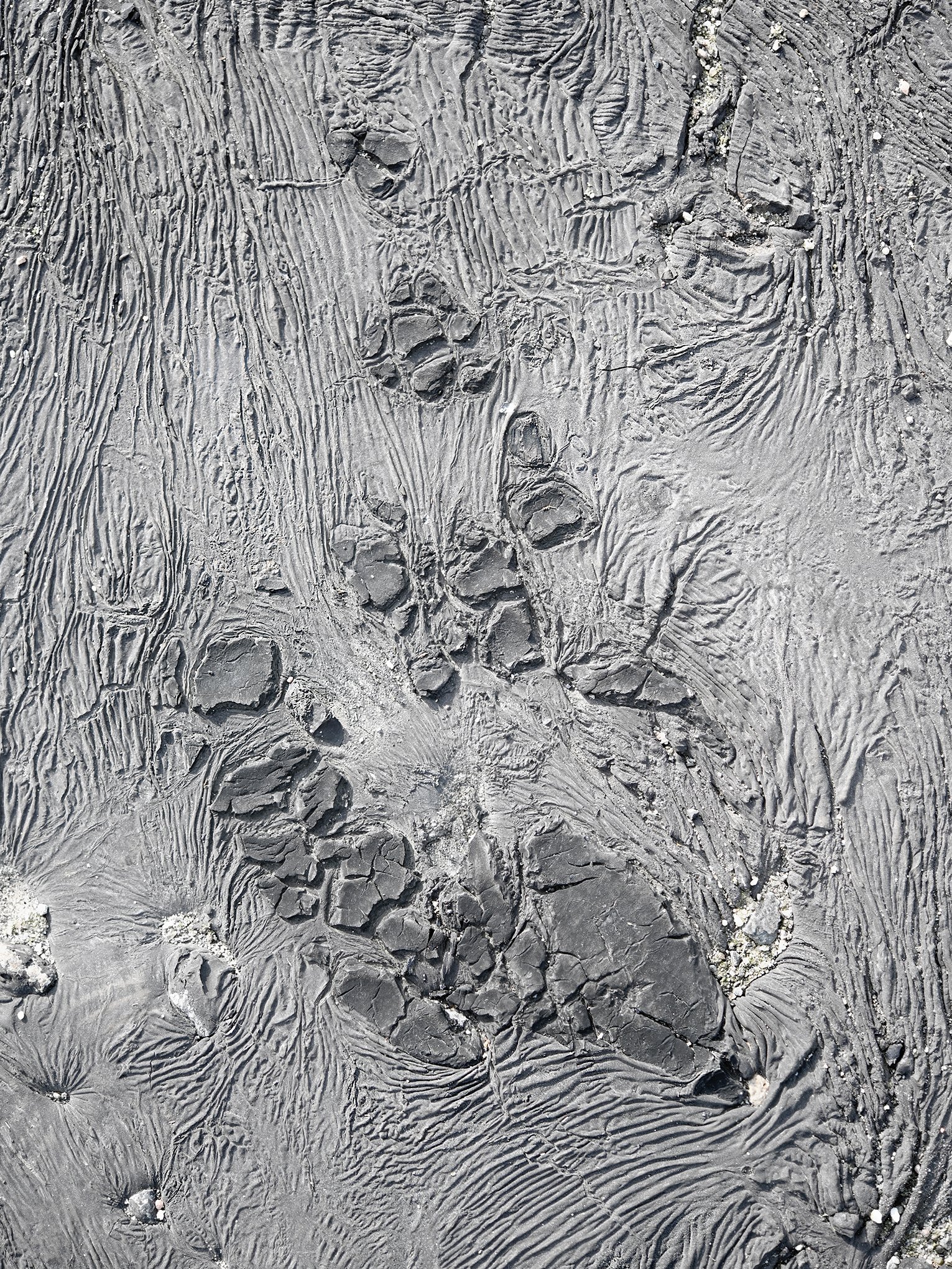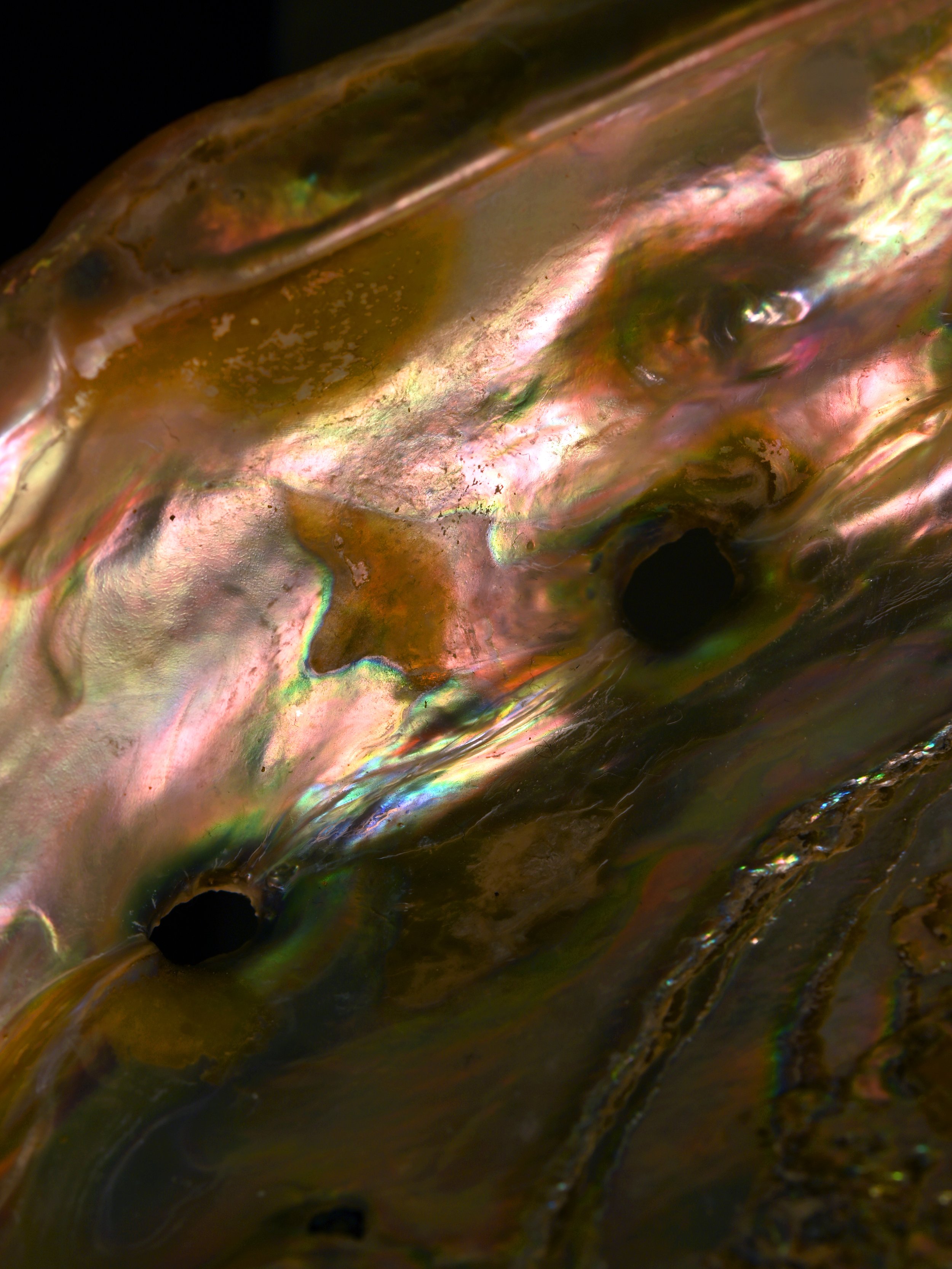Chrónosurficie
Surface," derived from the Latin word "superficies," composed of "super-" and "facies," meaning "face." By definition, surfaces are described as the skin or outer shell of a tangible object.
In geology, matter, particularly mineral aggregates, isn't regarded as nouns but as verbs, carrying out dynamic processes. They are thus defined as "tangible manifestations of processes," such as a volcanic eruption, the growth of a coral reef, or the rise of a mountain range, as articulated by geologist Professor Marcia Bjornerud in her book Timefulness (2018).
As an act of reconciliation with nature and a response to territorial alterations during the contemporary geological era known as the Anthropocene, Martina Alice Tolotti retraces the evolutionary history of Earth's substance. Her camera transforms into a narrative device that constructs imaginary scenarios, unveiling the result of numerous cycles of birth and extinction.
The project is divided into four chapters: Scales, Mother of Pearl, Mineral Aggregates, Magmi, and Gold Rutile. Starting from the premise that matter is in constant evolution, the awareness of this ongoing change has gradually led to a deeper sensitivity to this fact. Over time, this realization has allowed the artist to immagine how the presence of the previous lives of the cells in the body feels.
At one point, these cells were animal cells, fragments of rock, and plants, all part of an endless cycle of transformation. This understanding, which I have captured through the lens of my camera, finds expression in the project Chrónosurficies. It embodies the traces of evolution present in the surfaces of the Earth, capturing the tangible remnants of processes that span millions of years.
This project evokes awarness and aims to inspire a new attention towards the surrounding environment—one rooted in respect. If we understand that we are part of a continuous and interconnected cycle, we can develop a deeper sense of humility in the face of nature. The surfaces we encounter should not be viewed merely as objects but as signs of life’s ongoing processes.
This perspective could help shift the human ego from one of dominance to one of stewardship, fostering a more harmonious relationship with the planet. By recognizing our shared essence with all living beings and elements, we may be more inclined to protect and preserve the environment rather than exploit it.















